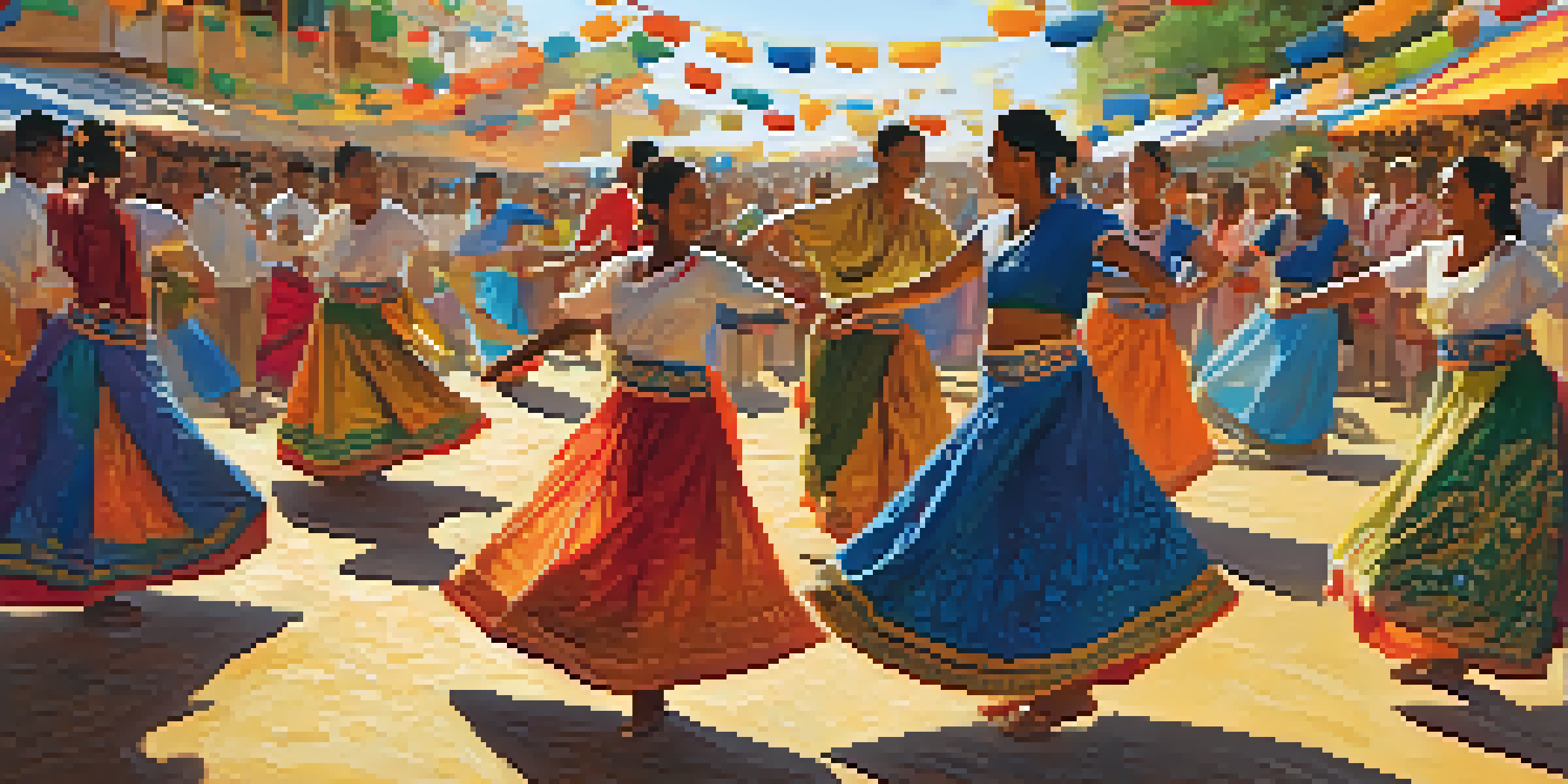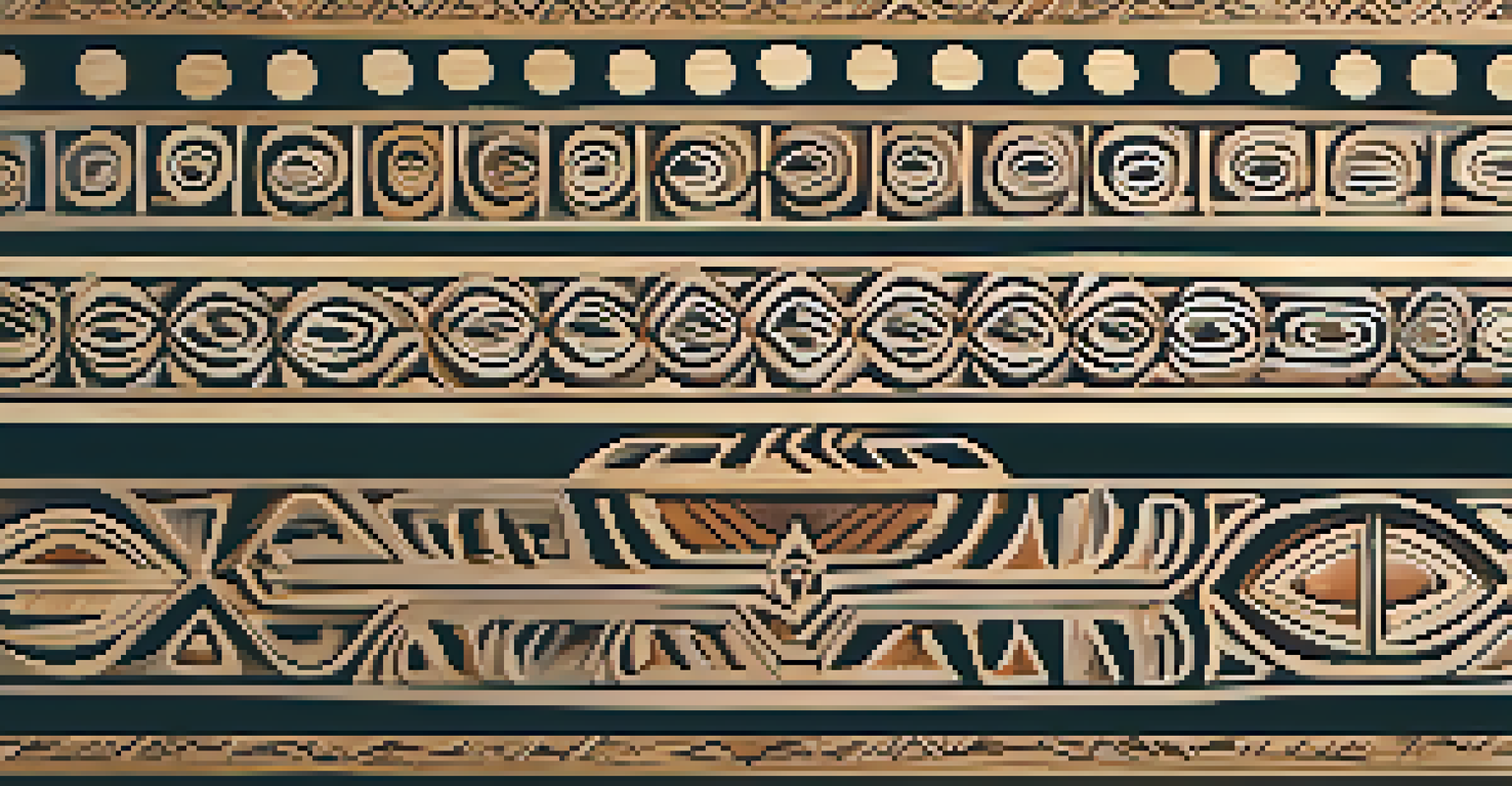Art as a Catalyst for Cultural Dialogue and Understanding

The Role of Art in Bridging Cultural Divides
Art has always been a powerful means of communication that transcends language barriers. It can convey emotions, ideas, and experiences that might be difficult to express through words alone. For instance, a painting can evoke feelings of joy or sorrow that resonate deeply with viewers from different backgrounds, enabling a shared understanding.
Art is the most beautiful of all lies.
When people engage with art from diverse cultures, they often find common ground in the emotions and themes presented. This connection helps dismantle preconceived notions and fosters empathy among individuals. For example, attending a cultural festival featuring traditional music and dance can create a sense of unity among participants, regardless of their origins.
Ultimately, art serves as a bridge that encourages dialogue, inviting individuals to explore and question their perspectives. By appreciating the artistry of another culture, we open ourselves to new experiences and viewpoints, paving the way for deeper connections and understanding.
Art as a Reflection of Cultural Identity
Every piece of art tells a story, often rooted in the culture and experiences of its creator. This artistic expression serves as a window into the identity of a community, showcasing its values, beliefs, and historical context. For instance, Indigenous art often incorporates symbols and motifs that reflect the relationship between the community and its environment, providing insights into their worldview.

When we engage with art that represents different cultural identities, we gain a better understanding of those communities' experiences and histories. This not only enriches our own knowledge but also fosters respect for diversity. An example is the use of mural art in urban areas, which often portrays the struggles and triumphs of marginalized communities, inviting others to reflect on their narratives.
Art Bridges Cultural Divides
Art transcends language barriers, fostering empathy and understanding among diverse cultures.
Recognizing the significance of cultural identity in art helps us appreciate the richness of human expression. By valuing these unique perspectives, we contribute to a more inclusive society where diverse voices are celebrated and heard.
Art Initiatives That Promote Cultural Exchange
Various art initiatives around the world aim to promote cultural exchange and understanding. Programs like artist residencies, cultural exchanges, and collaborative projects bring together individuals from different backgrounds to create and share their work. This interaction not only enhances artistic practices but also nurtures friendships and connections between participants.
The great artist is the simplifier.
For example, international art festivals often showcase artists from various countries, providing a platform for them to share their cultural narratives. These events encourage dialogue among attendees, fostering a sense of global community. When art becomes a shared experience, it creates space for conversations that might not occur otherwise.
Such initiatives are vital in today's increasingly globalized world, where understanding and collaboration are essential. By participating in or supporting these programs, we contribute to a culture of openness and appreciation for diversity.
The Impact of Digital Art in Cultural Dialogue
The rise of digital art has opened up new avenues for cultural dialogue, breaking down geographic barriers. Artists can now share their work with a global audience through social media platforms and online galleries. This accessibility allows for a broader exchange of ideas, styles, and cultural influences.
For instance, an artist from one part of the world can collaborate with a counterpart in another, creating hybrid forms of art that reflect multiple cultures. This fusion not only enriches the artistic landscape but also fosters conversations around shared experiences and mutual understanding. Digital art becomes a canvas for collaboration, showcasing how interconnected our world truly is.
Cultural Identity Through Art
Art reflects the values and experiences of communities, helping us appreciate and respect cultural diversity.
Moreover, digital platforms enable discussions around art that are inclusive and diverse. By inviting audiences to engage with art from different cultures, we can cultivate a deeper appreciation for the stories behind the creations.
Art as a Tool for Social Change
Art has historically been a vehicle for social change, allowing communities to voice their concerns and advocate for justice. Through powerful imagery and thought-provoking performances, artists can challenge societal norms and spark conversations around important issues. Movements like street art and performance art often highlight socioeconomic disparities and cultural injustices.
For example, the use of graffiti in protest movements has proven effective in raising awareness and mobilizing communities. These expressions not only communicate frustration but also inspire solidarity among those who resonate with the message. Art becomes a catalyst for change, encouraging people to reflect on their roles within society.
By recognizing the potential of art as a tool for advocacy, we can support initiatives that drive social progress. Engaging with these works allows us to become allies in the quest for equality and understanding.
Personal Stories: Art's Role in Cultural Understanding
Personal stories about how art has influenced cultural understanding can be powerful. For many, their first encounter with a different culture's art has opened doors to friendships and deeper connections. Sharing these experiences highlights how art can serve as a bridge between people from various backgrounds.
Consider the story of an individual who traveled abroad and found solace in the traditional dances of another culture. This experience not only enhanced their appreciation for that culture but also led to lasting friendships with local artists. These narratives illustrate that art can foster connections that transcend borders, creating a shared sense of humanity.
Digital Art Enhances Cultural Dialogue
The rise of digital art facilitates global collaboration and discussions, enriching cultural exchanges.
By sharing personal stories, we emphasize the importance of art in fostering cultural dialogue. These anecdotes remind us that every interaction with art has the potential to reshape our understanding of the world and those in it.
The Future of Art in Cultural Exchange
As we look to the future, the role of art in cultural exchange and understanding continues to evolve. With advancements in technology and increased global connectivity, artists have more opportunities than ever to collaborate and share their work. This evolution promises to further enrich our cultural landscapes.
Moreover, as societies become more diverse, the demand for inclusive art that reflects a myriad of experiences will grow. This evolution encourages artists to explore and embrace their unique cultural identities while also engaging with others. The future of art will likely be characterized by a celebration of diversity and a quest for deeper understanding.

Ultimately, art will remain a vital medium for fostering dialogue and connection. By supporting and participating in artistic endeavors that celebrate cultural exchange, we can contribute to a more empathetic and interconnected world.